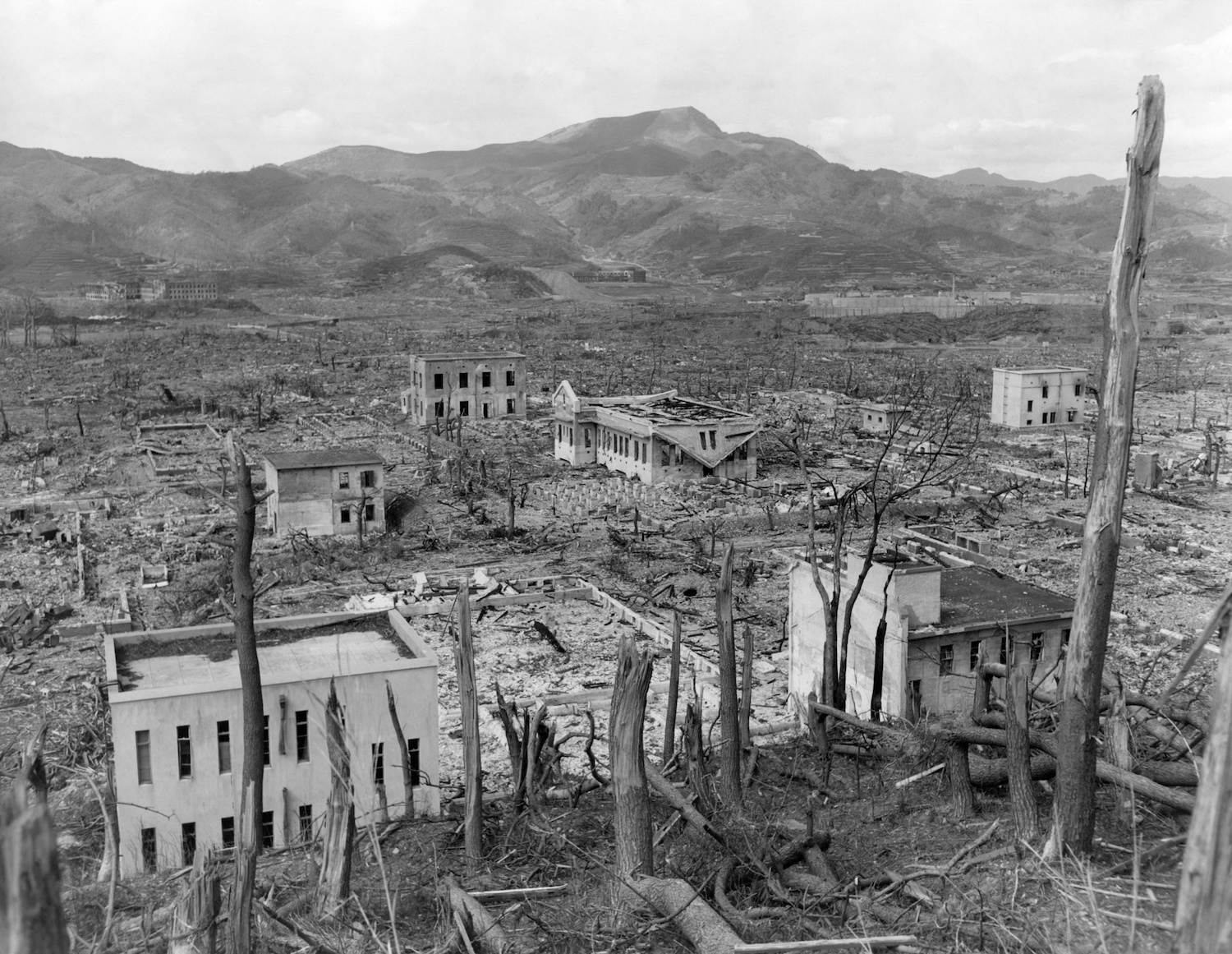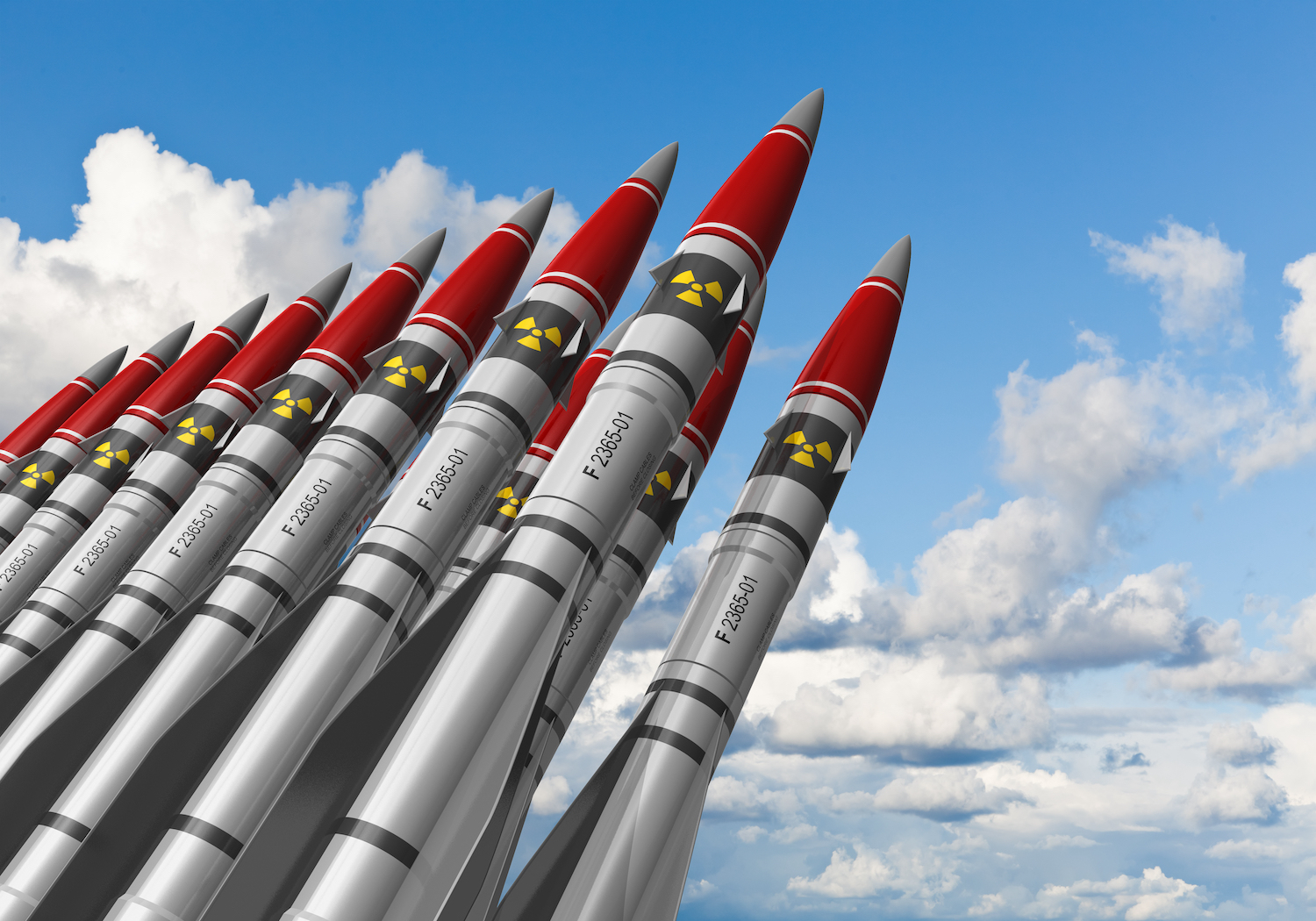Russian leader Vladimir Putin has suggested that he would consider using nuclear weapons if confronted with a NATO military response in Ukraine, or if faced with a direct threat to his person or regime. If the war spreads to a NATO country like Estonia or Poland a direct US-Russia confrontation would take place, with a clear danger of runaway nuclear escalation.
The world is therefore arguably now closer to nuclear conflict than at any time since the 1962 Cuban Missile Crisis. So what would a full-scale nuclear exchange look like in reality? Is it truly global Armageddon, or would it be survivable for some people and places?
Many scientists have investigated this question already. Their work is surprisingly little known, likely because in peacetime no one wants to think the unthinkable. But we are no longer in peacetime and the shadows of multiple mushroom clouds are looming once again over our planet.
Current nuclear weapons inventories
The latest assessment of Russian nuclear military capability estimates that as of early 2022 Russia has a stockpile of approximately 4,477 nuclear warheads — nearly 6,000 if “retired” warheads are included. The US maintains a similar inventory of 5,500 warheads, with 3,800 of those rapidly deployable.
The explosive power of these weapons is difficult to comprehend. It has been estimated that about 3 million tons (megatons or Mt) of TNT equivalent were detonated in World War II. For comparison, each of the UK’s Trident submarines carries 4 megatons of TNT equivalent on 40 nuclear warheads, meaning each submarine can cause more explosive destruction than took place during the entirety of World War II.
Hiroshima and Nagasaki
In 1945 the US attacked the Japanese cities of Hiroshima and Nagasaki with atomic bombs, giving us two real-world examples of the effects of nuclear weapons on human populations.
A total of 140,000 people in Hiroshima and 73,000 in Nagasaki died instantaneously or within five months due to the nuclear blast, intense radiant heat from the fireball and ionizing radiation.
Many people caught within 1km of ground zero were carbonized by heat rays, and those up to 1.5km away suffered flash burning with large areas of skin later peeling off. Some, especially those inside buildings, were reduced to white bones as all flesh was vaporized by the intense heat.

Many survivors, later to become known as hibakusha in Japanese, suffered acute radiation sickness (ARS) from neutron and gamma rays released by nuclear fission in the blasts. Symptoms included bloody diarrhea, hair loss, fever and intense thirst. Many later died. As well as direct radiation from the fireballs they were also exposed to radioactive fallout from the bomb.
The longer-term effects of radiation experienced by the hibakusha have been intensively studied, and include increased levels of leukemia and solid cancers. However, experiencing an atomic bombing was not an automatic death sentence: among the 100,000 or so survivors the excess rates of cancer over the subsequent years were about 850, and leukemia less than 100.
Hiroshima and Nagasaki show that — apart from short-term ARS — long-term radiation from fallout will be the least of our problems following a nuclear war. Much more serious will be social collapse, famine and the breakdown of much of the planetary biosphere.
‘Limited’ nuclear conflict – 100 warheads between India and Pakistan
Prior to the Ukraine war it seemed very unlikely that the superpowers would confront each other again, so many researchers turned to studying the impacts of more limited nuclear conflicts.
One study published two years ago looked at the likely impacts of a nuclear exchange of about 100 Hiroshima-sized detonations (15 kt yield each) on the most-populated urban areas of India and Pakistan. Each detonation was estimated to incinerate an area of 13 square km, with this scenario generating about 5 Tg (teragrams) of soot as smoke from wildfires and burning buildings entered the atmosphere.
Direct human deaths in this “limited” nuclear war scenario are not quantified in the study, but would presumably number in the tens to hundreds of millions. The planetary impacts are also severe: as the soot reaches the stratosphere it circulates globally, blocking incoming solar radiation and dropping the Earth’s surface temperature by 1.8C in the first five years.
This would be a greater cooling than caused by any recent volcanic eruption, and more than any climate perturbation for at least the last 1,000 years. Rainfall patterns are drastically altered, and total precipitation declines by about 8 percent. (These results come from widely-used climate models of the same types used to project long-term impacts of greenhouse gas emissions.)
Food exports collapse as stocks are depleted within a single year, and by year four a total of 1.3 billion people face a loss of about a fifth of their current food supply. The researchers conclude that “a regional conflict using <1 percent of the worldwide nuclear arsenal could have adverse consequences for global food security unmatched in modern history.”
A 2014 study of the same scenario (of a 100-weapon nuclear exchange between India and Pakistan) found that the soot penetrating the stratosphere would cause severe damage to the Earth’s ozone layer, increasing UV penetration by 30-80 percent over the mid-latitudes. This would cause “widespread damage to human health, agriculture, and terrestrial and aquatic ecosystems,” the researchers wrote. “The combined cooling and enhanced UV would put significant pressures on global food supplies and could trigger a global nuclear famine.”

Full-scale nuclear exchange
If global nuclear famine could result from just 100 nuclear detonations, what might be the result of a fuller exchange of the several thousand warheads held in current inventories by the US and Russia?
One 2008 study looked at a Russia-US nuclear war scenario, where Russia would target 2,200 weapons on Western countries and the US would target 1,100 weapons each on China and Russia. In total, therefore, 4,400 warheads detonate, equivalent to roughly half the current inventories held each by Russia and the US.
Nuclear weapons held by other states were not used in this scenario, which has a 440-Mt explosive yield, equivalent to about 150 times all the bombs detonated in World War II. This full-scale nuclear war was estimated to cause 770 million direct deaths and generate 180 Tg of soot from burning cities and forests. In the US, about half the population would be within 5km of a ground zero, and a fifth of the country’s citizens would be killed outright.
A subsequent study, published in 2019, looked at a comparable but slightly lower 150 Tg atmospheric soot injection following an equivalent scale nuclear war. The devastation causes so much smoke that only 30-40 percent of sunlight reaches the Earth’s surface for the subsequent six months.
A massive drop in temperature follows, with the weather staying below freezing throughout the subsequent Northern Hemisphere summer. In Iowa, for example, the model shows temperatures staying below 0°C for 730 days straight. There is no growing season. This is a true nuclear winter.
Nor is it just a short blip. Temperatures still drop below freezing in summer for several years thereafter, and global precipitation falls by half by years three and four. It takes over a decade for anything like climatic normality to return to the planet.
By this time, most of Earth’s human population will be long dead. The world’s food production would crash by more than 90 percent, causing global famine that would kill billions by starvation. In most countries less than a quarter of the population survives by the end of year two in this scenario. Global fish stocks are decimated and the ozone layer collapses.
The models are eerily specific. In the 4,400 warhead/150 Tg soot nuclear war scenario, averaged over the subsequent five years, China sees a reduction in food calories of 97.2 percent, France by 97.5 percent, Russia by 99.7 percent, the UK by 99.5 percent and the US by 98.9 percent. In all these countries, virtually everyone who survived the initial blasts would subsequently starve.
Human extinction?
Even the 150 Tg soot nuclear war scenario is orders of magnitude less than the amount of smoke and other particulates put into the atmosphere by the asteroid that hit the Earth at the end of the Cretaceous, 65 million years ago, killing the dinosaurs and about two-thirds of species alive at the time.
This implies that some humans would survive, eventually to repopulate the planet, and that a species-level extinction of Homo sapiens is unlikely even after a full-scale nuclear war. But the vast majority of the human population would suffer extremely unpleasant deaths from burns, radiation and starvation, and human civilization would likely collapse entirely. Survivors would eke out a living on a devastated, barren planet.
It was this shared understanding of the consequences of nuclear Armageddon that led to the 1985 statement by then US President Ronald Reagan and Soviet General Secretary Mikhail Gorbachev that “a nuclear war cannot be won and must never be fought.” This statement was reaffirmed by Presidents Biden and Putin as recently as January 2022. Even as war rages in Ukraine it remains as true now as it was then.
With children’s hospitals bombed and refugees shelled as they flee, emotions run high. But cool heads must ultimately prevail, so that we can collectively step back from the brink of Russia-NATO confrontation before it is too late. The price of nuclear escalation is planetary suicide, with no winners at all. That won’t save lives in Ukraine — it will simply take the death toll of the current war from the thousands to the billions.
Image: Nuclear bomb test in the ocean. Photo: Shutterstock/Romolo Tavani
